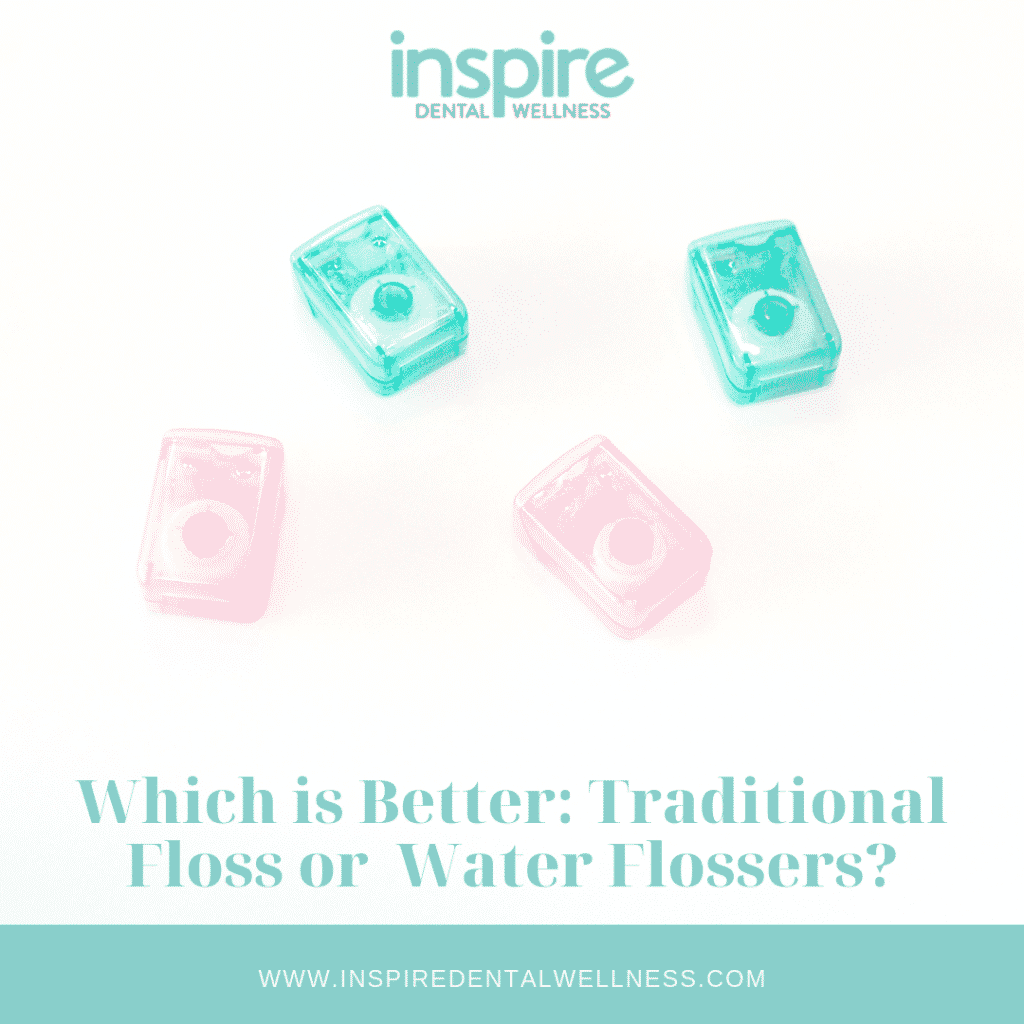
Flossing. It’s something many of my patients dread and therefore don’t do often enough. Some of them might think I don’t notice… but I do. Flossing is so important but honestly, I get why most people think it’s a pain. It takes a lot of time, it can sometimes feel uncomfortable, and it’s just one more step in an already too long morning and/or nighttime routine.
I always want to make things as easy as possible for my patients, and that’s why I like to try out various oral hygiene tools so I can make qualified recommendations. If there’s a tool out there that will save you time or make the experience more pleasant, you better believe I want to know about it.
In this blog post, I’m going to share my thoughts about water flossers and then share whether I think they’re better than traditional floss.
What is a Water Flosser?
Water flossers are fairly common devices, and you probably know them more commonly referred to by the brand name Waterpik. This is kind of like the Kleenex phenomenon. There are lots of water flosser brands out there, but Waterpik is the most popular.
So what is it? It’s an interdental cleaning device, which just means it cleans between your teeth. They have a chamber that you fill up with water, and then when you turn it on, it shoots out a small and very powerful stream of water. When you aim this stream of water at your teeth and along your gum line, it can dislodge food particles and tartar buildup, just like traditional floss can.
What Are the Benefits of a Water Flosser?
According to OGLF.org (Our Good Living Formula), a website that does in-depth product reviews, water flossers such as the Waterpik are significantly more effective than traditional floss. They state that “clinical studies of the Waterpik have found that the water flosser is 51% more effective for reducing gingivitis, twice as effective at reducing gingival bleeding, and 29% more effective at removing plaque.”
In addition to doing a better job of removing plaque and reducing gingivitis, water flossers have also been shown to be more gentle around implants and highly effective for cleaning around braces and other orthodontic devices … and anything that makes that process a little easier is a winner in my book!
Are There Any Drawbacks?
The biggest downsides that come with a water flosser are the initial cost and the learning curve that come with using it initially. Water flossers typically start at around $30 but can cost as much as $100 depending on how many bells and whistles you want it to have. With dental floss being so inexpensive, this can sometimes deter people away from using them.
They also take a little bit of trial and error to learn how to use. The first few times might be a little messy, but people usually get the hang of it fairly quickly. If you’ve ever gone from a manual toothbrush to an electric toothbrush you know that there’s a bit of a transitional period as you get used to the new sensation.
Final Thoughts
If you struggle with flossing or you have gingivitis that you struggle to manage, I would love to see you invest in a water flosser. Even one of the basic models at the lower end of the price range can be really effective and it won’t break the bank.
At the end of the day, you’ll need to decide which tool works best for you. Ultimately, the one that you are going to reach for at least once a day is the one we recommend! If you have questions about flossing, water flossers, or anything else related to dental hygiene, feel free to reach out to us at 708-816-5167 or contact us via our website!
